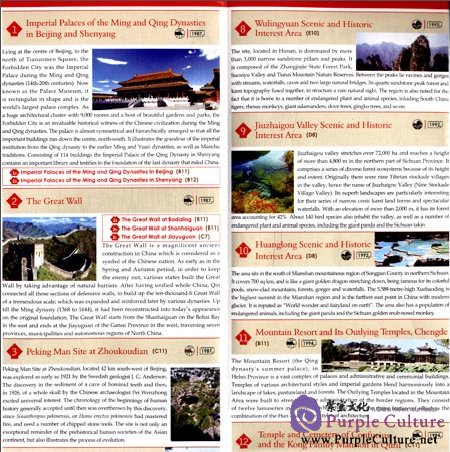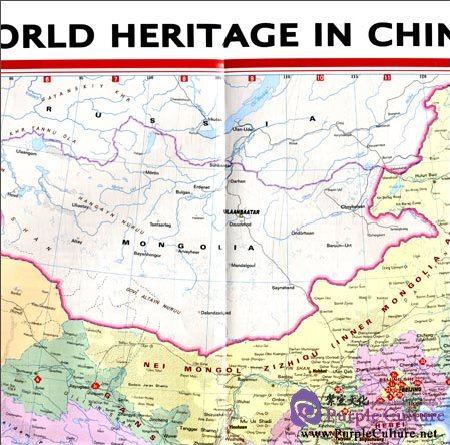Sample Pages Preview


Lying at the centre of Beijing, to the north of Tiananmen Square, the Forbidden City was the Imperial Palace during the Ming and Qing dynasties (14th-20th centuries). Now known as the Palace Museum, it is rectangular in shape and is the world's largest palace complex. As a huge architectural cluster with 9,000 rooms and a host of beautiful gardens and parks, the Forbidden City is an invaluable historical witness of the Chinese civilization during the Ming and Qing dynasties. The palace is almost symmetrical and hierarchically arranged so that all the important buildings run down the centre, north-south. It illustrates the grandeur of the imperial institution from the Qing dynasty to the earlier Ming and Yuan dynasties, as well as Manchu traditions. Consisting of 114 buildings the Imperial Palace of the Qing Dynasty in Shenyang contains an important library and testifies to the foundation of the last dynasty that ruled China.
Imperial Palaces of the Ming and Qing Dynastles in Beijing (B11)
Imperial Palaces of the Ming and Qing Dynasties in Shenyang(B12)
The Great Wall
The Great Wall at Badaling (B11)
The Great Wall at Shanhaiguan (B11)
The Great Wall at Jiayuguan (C7)
The Great Wail is a magnificent ancient construction in China which ,is considered as a symbol of the Chinese nation. As early as in the Spring and Autumn period,in order to keep the enemy out, various states built the Great Wall by taking advantage of natural barriers. After having unified Jwhole China, Qin connected all those sections of defensive walls, to build up the ten-thousand-li Great Wall of a tremendous scale; which was expanded and reinforced later by various dynasties. Up till the Ming dynasty (1368 to i644), it had been reconstructed into today's appearance on the original foundation.

